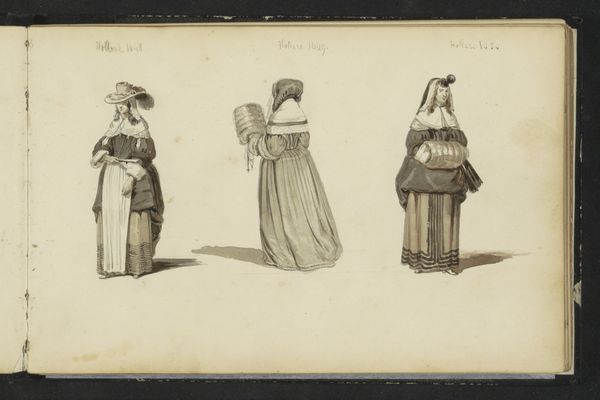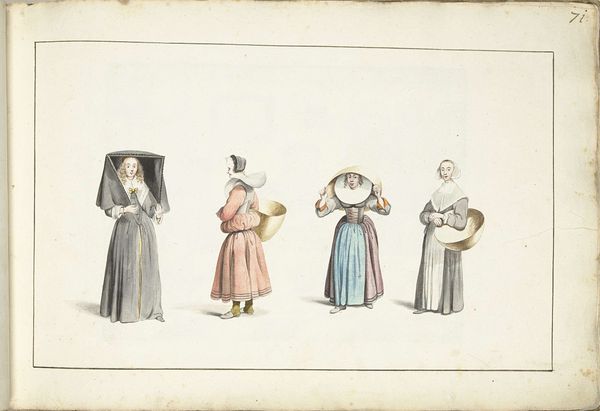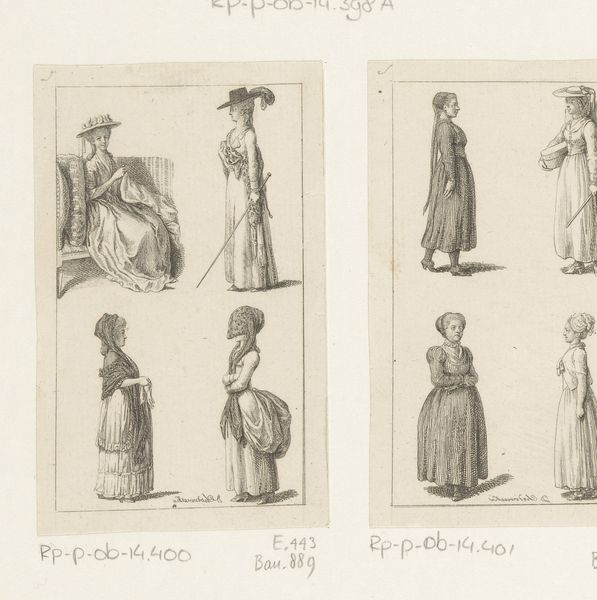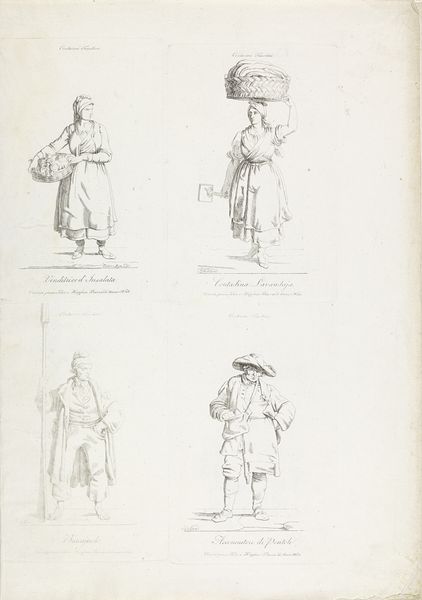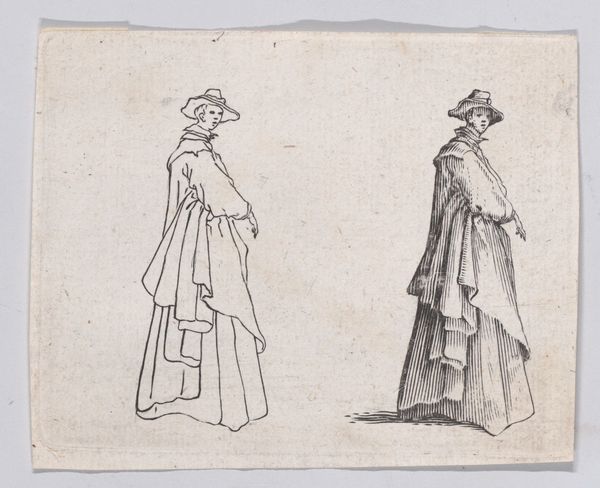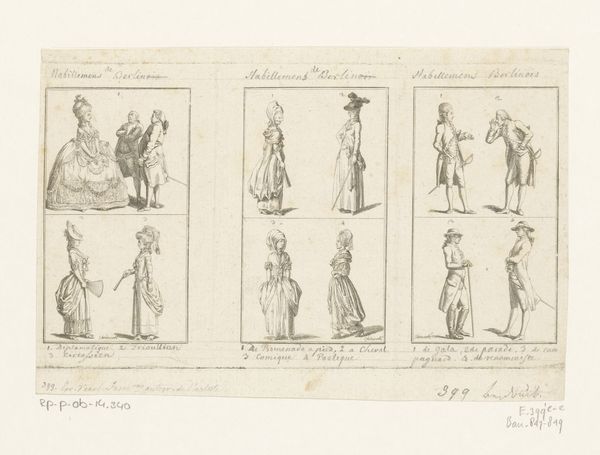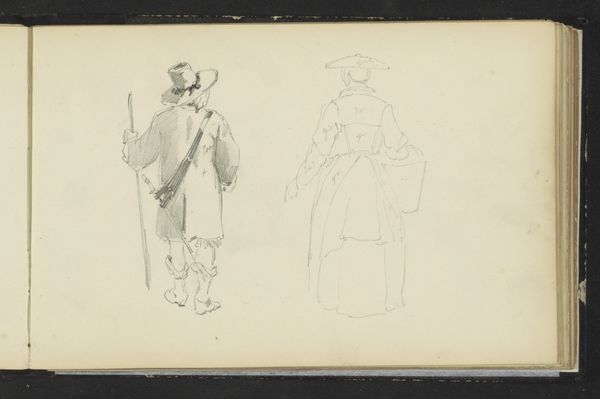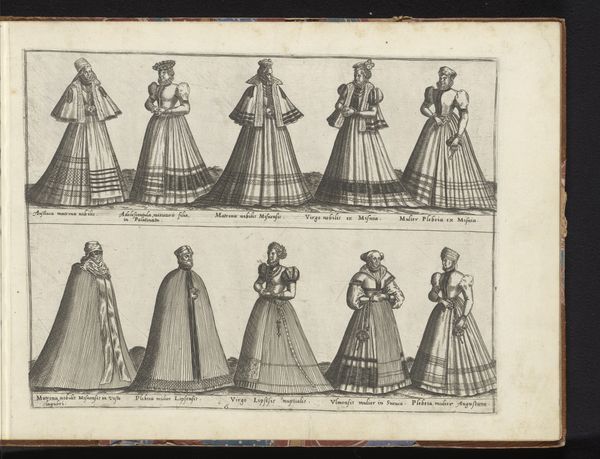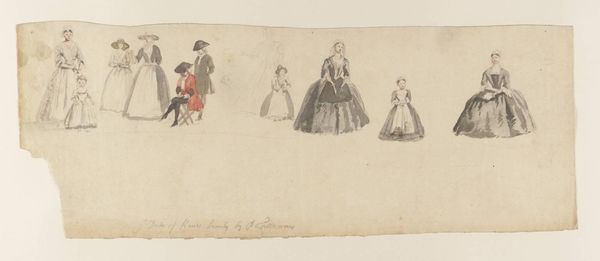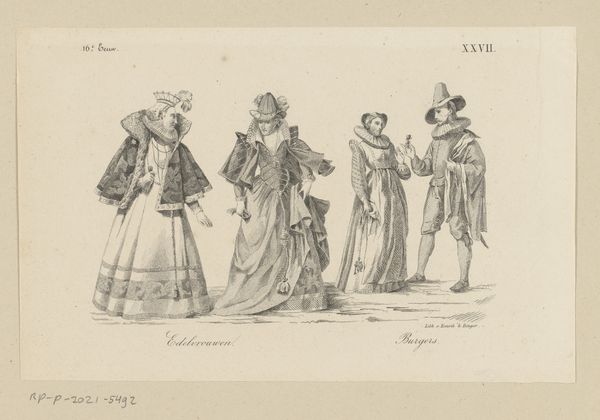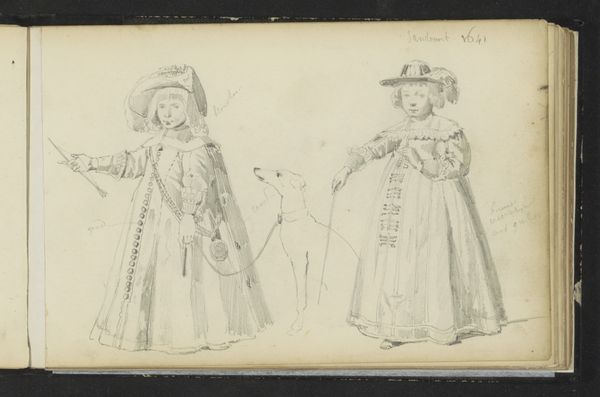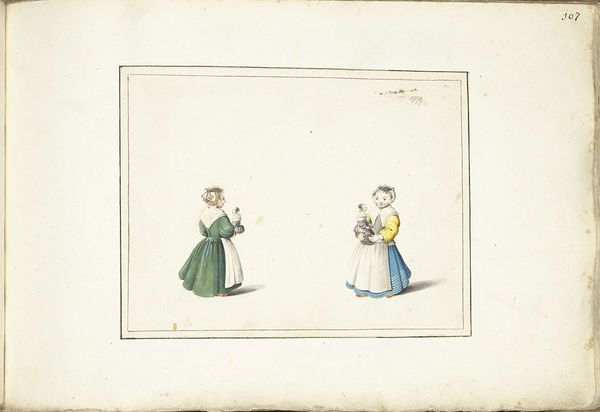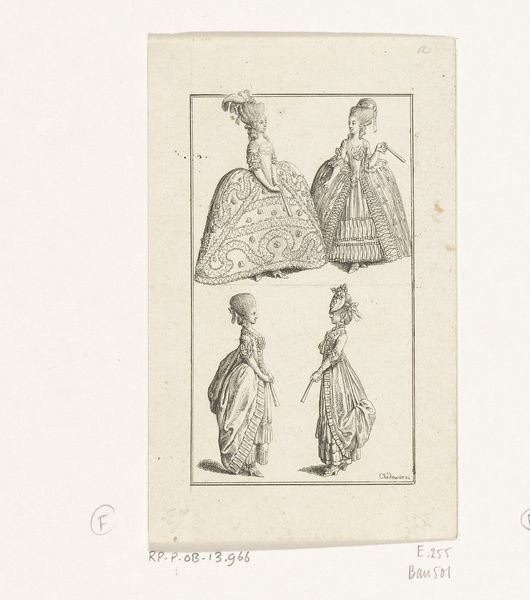
Studier af to kvinder med parasol og en arbejdende kvinde 1822 - 1848
0:00
0:00
drawing, pencil
#
portrait
#
drawing
#
pencil
#
genre-painting
#
academic-art
Dimensions: 227 mm (height) x 138 mm (width) (bladmål)
Curator: Looking at this pencil drawing, titled "Studier af to kvinder med parasol og en arbejdende kvinde"—that's "Studies of two women with parasols and a working woman"—created sometime between 1822 and 1848 by Christen Købke, I immediately get a sense of intimate observation. Editor: Intimate and stark, almost melancholy. There's something about the emptiness surrounding these figures, these women, that speaks of isolation and the disparate realities of 19th-century Danish life. Two women shielded by parasols and a worker bearing a heavy load. Curator: Precisely! It’s interesting how he positions the women; the parasol carriers appear delicate and almost floating. And then you have the laboring woman who appears much more grounded by her burden, literally and figuratively, she's shown carrying what looks like milk pails. Köbke has created this world within the sketch. It feels like the moment he had paused and considered existence. Editor: It’s a candid, almost documentarian glimpse. You have these distinct social classes rendered side-by-side, emphasizing their separation but, paradoxically, connecting them within the same frame, on the same page, within the same social and economic system. The parasols act as markers of privilege but they also conceal something—perhaps a shielding from the realities faced by the working woman. Curator: Yes, the women holding parasols, I sense them as shy, the lines delicate almost a feeling that it is barely there, compared to the clear shape of the laboring woman and her burdens. Editor: The very medium—pencil—feels significant. Pencil allows for erasure, for redrafting, reflecting perhaps the impermanence and fluidity of social identities. It challenges that sense of social position as pre-given and unchangeable, instead allowing space to explore it. And this portrayal in the sketchbook feels like a space to pose some questions regarding society. Curator: Indeed! You can almost feel him deciding on the figures' forms. The way Köbke captures the fleeting glimpses of daily existence is, for me, just beautiful. It resonates with a deeper exploration into what it meant to be alive. Editor: It urges us to confront the historical inequalities and the labor exploitation embedded within what we might naively perceive as a simple, unassuming, genre painting. It reveals those things so discreetly—in pencil lines! Amazing how one can use that tool so poetically and provocatively at once. Curator: Well put!
Comments
No comments
Be the first to comment and join the conversation on the ultimate creative platform.
